Discover Strength Changes Everything
Strength Changes Everything

Strength Changes Everything
Author: The Exercise Coach
Subscribed: 81Played: 4,511Subscribe
Share
© Copyright ExerciseCoach.com
Description
The Exercise Coach presents: The Strength Changes Everything Podcast. Learn from Exercise Coach Co-Founder Brian Cygan, Franchisee Amy Hudson, and Dr. James Fisher, Chief Science Officer of The Exercise Coach about how to enjoy a strong, healthy lifestyle. The Exercise Coach's unique two 20-minute workouts a week is how thousands across the United States get and stay in great shape. This podcast gives you the facts, from the experts, in easy-to-understand lessons so you can take control of your life.
265 Episodes
Reverse
Are you sabotaging your strength gains without realizing it? Amy Hudson and Dr. James Fisher continue the Series on the Principles of Exercise Design. In today's episode, they break down the concept of inroading, explain how every workout triggers both fatigue and adaptation, and reveal why recovery is just as important as effort. They cover how to maximize strength gains, avoid plateaus, optimize training frequency, and use your body's natural recovery cycle to build lasting progress. Dr. Fisher explains how inroading works. It's the immediate fatigue you feel when a muscle is pushed to true effort. That short-term drop in performance is exactly what triggers long-term adaptation. Dr. Fisher highlights why you always feel weaker at the end of a workout. The workout itself isn't where strength appears; it's where the demand for strength is created. Your body waits until you're resting to build the improvements that lead to more strength. Amy reveals why inroading is such an important part of strength training. It lets you reach the deeper layers of muscle fibers that light, easy reps never touch. And once you can reach those fibers consistently, your long-term progress becomes far more predictable. Dr. Fisher explains the two phases every workout goes through. First, you feel the immediate drop in energy and strength, and that part happens instantly. The second part, the repair phase, is quiet, slow, and where all the positive changes take place. Dr. Fisher highlights the problem with insufficient recovery. Dr. Fisher explains how strength gains come from a simple pattern. You give your body a clear challenge, then you get out of the way long enough for it to respond. When that cycle isn't interrupted, your progress becomes steady and consistent. Amy covers how long most people need to recover from a hard session. For many, that window sits somewhere between 24 and 48 hours, especially after real effort. That's why back-to-back strength days tend to do more harm than good. What long-term research says about training frequency. Two workouts a week hits the sweet spot where your body gets enough stimulus but still has room to recover. You can grow with once-a-week sessions too, but going past two rarely adds any new benefit. Dr. Fisher explains how outside stress affects your progress in the gym. Poor sleep, emotional strain, or a stressful week at work drains the same energy your workouts require. Amy covers why the best personal trainers pay close attention to recovery when designing a strength plan. They know the workout is only half the story, and the real improvements show up when your body has time to adapt. Dr. Fisher highlights why consistency wins out over intensity. Showing up twice a week across months and years outperforms short bursts of extreme effort followed by burnout. Amy explains what actually happens after a workout ends. The session challenges your muscles, but the growth happens later, when you're resting and not even thinking about the gym. If recovery is high-quality, every return session should feel just a bit stronger than the last. Dr. Fisher covers why extra sets aren't the secret to growth. Once every muscle fiber has been recruited, more work doesn't add more stimulus; it only adds more fatigue. And that extra fatigue delays the recovery you depend on for strength gains. Dr. Fisher explains why doing more exercise isn't the same as doing better exercise. According to Dr. Fisher, making up for missed workouts is a trap. Doubling your workload because you skipped a session only leaves you sore, tired, and drained for days afterward. Learn why simple, focused workouts beat complicated ones. A handful of well-chosen exercises taken to meaningful effort provide everything your body needs. Once that stimulus is delivered, more volume just becomes noise. Amy covers the repeating cycle behind effective strength training. You challenge the muscle, you give it space to rebuild, and then you return slightly more capable than before. Dr. Fisher explains how a good personal trainer will use inroading to push you just enough for growth. It's not about doing more work than necessary, but hitting the right intensity so your muscles are challenged. Then, with proper recovery, each session builds on the last, and progress becomes consistent. Dr. Fisher explains supercompensation in a way that actually makes sense. A hard workout drives your performance slightly below normal, but recovery lifts you above that normal line once the repair is done. And that rise above baseline is where the gains hide. Dr. Fisher highlights what it really means to train smarter. You put in the right amount of effort, protect your recovery, and let those small improvements stack up. Over time, that balance takes you much further than grinding endlessly in the gym. Mentioned in This Episode: The Exercise Coach - Get 2 Free Sessions! Submit your questions at StrengthChangesEverything.com This podcast and blog are provided to you for entertainment and informational purposes only. By accessing either, you agree that neither constitute medical advice nor should they be substituted for professional medical advice or care. Use of this podcast or blog to treat any medical condition is strictly prohibited. Consult your physician for any medical condition you may be having. In no event will any podcast or blog hosts, guests, or contributors, Exercise Coach USA, LLC, Gymbot LLC, any subsidiaries or affiliates of same, or any of their respective directors, officers, employees, or agents, be responsible for any injury, loss, or damage to you or others due to any podcast or blog content.
Are you activating all the muscle fibers in your workout, or are you leaving gains on the table? Amy Hudson and Dr. James Fisher continue their deep dive into the Principles of Exercise Design. In today's episode, they break down muscle fiber recruitment; why it matters, how your body decides which fibers to use, and what that means for your strength. They cover the Size Principle, the importance of continuous muscular loading, and how to structure your workout to reach the fibers that actually drive growth and performance. Dr. Fisher explains the All-or-Nothing theory and why your muscles are either fully "on" or fully "off." He breaks down how your body only recruits the exact fibers needed for the task in front of you. Knowing this helps you understand why you need higher effort to see real strength gains. Dr. Fisher explains that Type 1 fibers are cheap to use, so your body loves using them first. They handle endurance but don't give you the strength you want. He shows how pushing harder in the gym is what finally taps into Type 2 fibers. Learn why Type 2 fibers are powerful but expensive for your body to use. They fatigue quickly, so your system avoids them unless you give a strong stimulus. But once you activate them, that's when real growth and strength improvements happen. Dr. Fisher explains how your nervous system recruits muscle fibers from smallest to largest. It's your body's way of protecting energy while still meeting the force demands of your workout. Amy highlights how the body is constantly trying to conserve energy. That means it avoids using high-cost muscle fibers unless absolutely necessary. Dr. Fisher shares why multiple-set training often fails to push you to true effort. When you simply count reps, you usually stop far short of full muscle recruitment. So, you're leaving huge results on the table without even realizing it. Amy covers why resting between sets resets the whole muscle recruitment process. Once your Type 1 fibers recover, your body goes right back to using them first. And that makes it harder for you to reach those high-impact Type 2 fibers that drive strength. Amy highlights that if full muscle fiber recruitment is the goal, you don't want to stop and restart the process over and over. Every pause delays that final layer of activation. And that delay means slower strength gains and less efficient workouts. Dr. Fisher covers why eccentric loading is such a game-changer in strength training. We're naturally stronger on the lowering phase, but most equipment doesn't challenge us there. When you finally load that phase properly, you maintain deeper fiber recruitment for longer. Dr. Fisher shares how exerbotics devices keep you working harder during the eccentric phase instead of giving you a break. Amy and Dr. Fisher cover the biggest benefit of working with a personal trainer. With expert guidance and efficient workouts, you can achieve better results more quickly than you might on your own. Dr. Fisher explains why walking and jogging are great for general health but not enough for full muscle recruitment. Amy highlights that losing Type 2 fibers is the real reason people feel weaker, less balanced, and less stable over time. These fibers are the ones responsible for power and functional strength. Amy covers the importance of eccentric training and how it helps you get more out of every rep. When you challenge the lowering phase, you keep more fibers active for longer. And that translates into faster progress with less time spent working out. Dr. Fisher explains that strength training only works when you recruit all available fibers. Multi-set training often delays this because you keep letting fibers rest between rounds. Dr. Fisher explains how a personal trainer can guide you to hit the right muscle fibers every time. Most people lift without fully recruiting the fibers that actually build strength and shape. With the right guidance, you maximize every rep for faster, noticeable results. Amy highlights that your main job in a workout is simple. Recruit the fibers. When you keep them loaded continuously at the right effort, everything changes. Mentioned in This Episode: The Exercise Coach - Get 2 Free Sessions! Submit your questions at StrengthChangesEverything.com This podcast and blog are provided to you for entertainment and informational purposes only. By accessing either, you agree that neither constitute medical advice nor should they be substituted for professional medical advice or care. Use of this podcast or blog to treat any medical condition is strictly prohibited. Consult your physician for any medical condition you may be having. In no event will any podcast or blog hosts, guests, or contributors, Exercise Coach USA, LLC, Gymbot LLC, any subsidiaries or affiliates of same, or any of their respective directors, officers, employees, or agents, be responsible for any injury, loss, or damage to you or others due to any podcast or blog content.
Do you really need to warm up before a strength training workout? Amy Hudson and Dr. James Fisher kick off a brand-new series titled Principles of Exercise Design. In this series, they'll break down the key components that make every workout safer, more effective, and better aligned with your goals. In today's episode, they explore one of the most debated topics in fitness: the warm-up. You'll learn what science says about warming up, when it's truly necessary, and why strength training might already include everything your body needs to prepare. Tune in to hear how understanding the purpose behind warm-ups can help you train smarter, reduce wasted time, and focus on what actually drives results. Dr. Fisher starts by asking whether a warm-up is really necessary before strength training. He explains that extensive research shows no real need for a separate warm-up before lifting. The very nature of strength training includes a built-in progression that prepares the muscles safely and effectively. Dr. Fisher explains that most people don't begin their first repetition at maximum effort. Instead, the gradual increase in resistance and intensity throughout the set gently primes the muscles for heavier loads. Dr. Fisher highlights how progressive recruitment within a set serves as a warm-up. As you perform each repetition, your body gradually activates more muscle fibers. This process raises muscle temperature, enhances coordination, and makes an additional warm-up unnecessary. Amy and Dr. Fisher explain why some exercises, like sprints, need a warm-up. Sprinting is an all-out movement that demands maximum force right from the start. To avoid injury, the body must be prepared through light activation that prepares the muscles and joints. Dr. Fisher highlights that strength training is controlled, not explosive. Exercises like leg presses or chest presses never begin with maximal effort or range of motion. The gradual increase in load throughout the session replaces the need for stretching or separate warm-ups. Amy explores the logic behind warming up. She points out that it's sensible before activities demanding sudden force or unpredictable motion. But in strength training, your first repetitions are never your hardest, so the warm-up happens organically within the session. Dr. Fisher explains why good personal trainers skip long warm-ups. The goal isn't to fill time; it's to let your muscles warm naturally as resistance and effort increase. Amy and Dr. Fisher break down the two types of warm-up: general and specific. A general warm-up involves light activity, like cycling for a few minutes, to increase circulation and muscle temperature. It feels good, but it isn't essential before resistance training. Dr. Fisher describes a specific warm-up as targeted preparation for a heavy lift. This means gradually increasing load with lighter sets before attempting a maximal effort. It's useful when working toward top performance in compound lifts like deadlifts. Learn how personal training keeps you from overdoing your workouts. Dr. Fisher explains that a good session should be structured so your body adjusts safely, reducing fatigue and building strength without unnecessary strain. Dr. Fisher discusses whether wearing warm clothes affects muscle readiness. He clarifies that feeling warm doesn't mean the muscles are functionally prepared. True readiness comes from gradually increasing effort, not from external temperature. Amy concludes by summarizing the key insight from today's episode. In strength training, the warm-up is already built into the structure of the exercise itself. The progressive loading and fiber recruitment at the start of each set make a separate warm-up unnecessary. Mentioned in This Episode: The Exercise Coach - Get 2 Free Sessions! Submit your questions at StrengthChangesEverything.com This podcast and blog are provided to you for entertainment and informational purposes only. By accessing either, you agree that neither constitute medical advice nor should they be substituted for professional medical advice or care. Use of this podcast or blog to treat any medical condition is strictly prohibited. Consult your physician for any medical condition you may be having. In no event will any podcast or blog hosts, guests, or contributors, Exercise Coach USA, LLC, Gymbot LLC, any subsidiaries or affiliates of same, or any of their respective directors, officers, employees, or agents, be responsible for any injury, loss, or damage to you or others due to any podcast or blog content.
What if one small daily shift could improve your mood, health, and motivation? Amy Hudson and Dr. James Fisher break down the science and practice of gratitude. In today's episode, they unpack how gratitude reshapes your outlook on life, boosts exercise habits, and even improves your health. Tune in to hear practical ways to build a daily gratitude practice, the real value of personal trainers, and how positivity ripples through families and communities. Amy explains that with Thanksgiving and the holidays coming up, it's the perfect moment to look at how gratitude shapes our overall well-being. Amy shares Harvard-backed research showing that gratitude is strongly linked to greater happiness. People who practice it consistently feel more positive, enjoy life more deeply, cope better with adversity, and build stronger relationships. Amy highlights a study where participants wrote weekly reflections on specific topics. One group listed things they were grateful for, another focused on daily annoyances, and a third simply logged neutral events. Amy explains that after just 10 weeks, the gratitude group not only felt more optimistic, but they also exercised more and visited the doctor less. Dr. Fisher highlights that focusing on what's good in our lives naturally builds a more positive outlook. And that emotional shift changes how we move through the world, physically and mentally. Amy and Dr. Fisher share that people with a more positive outlook often engage more in exercise and strength training. Dr. Fisher points out that this is a two-way street: exercise boosts positivity, and positivity increases your likelihood of working out. It's a reinforcing loop that improves the mind and body at the same time. Amy explains that a gratitude practice can be as simple as 5 minutes a day, five days a week, for six weeks. Research shows this habit supports mental wellness and creates lasting perspective shifts. Dr. Fisher shares that when we practice gratitude, we tend to spread it. Our positive emotions rub off on the people around us, and that ripple effect can change cultures and relationships. Amy highlights how grateful she is for the exercise coaches who show up every day to guide clients through life-changing workouts. She recognizes that their impact reaches far beyond reps and sets. Amy and Dr. Fisher emphasize that personal trainers bring the kind of knowledge, communication skills, and real-world relationship-building that no lab can replicate. Dr. Fisher explains that exercise coaches combine science, like physiology and biomechanics, with soft skills that help clients feel seen and supported. That blend is what gets real results session after session. Dr. Fisher highlights that personal trainers are, in many ways, healthcare professionals delivering preventative and rehabilitative support. Yet society often undervalues them, which is why he's so passionate about celebrating them. Dr. Fisher and Amy cover how the benefits of strength training ripple outward: healthier and fitter people influence their families, coworkers, and communities. Mentioned in This Episode: The Exercise Coach - Get 2 Free Sessions! Submit your questions at StrengthChangesEverything.com This podcast and blog are provided to you for entertainment and informational purposes only. By accessing either, you agree that neither constitute medical advice nor should they be substituted for professional medical advice or care. Use of this podcast or blog to treat any medical condition is strictly prohibited. Consult your physician for any medical condition you may be having. In no event will any podcast or blog hosts, guests, or contributors, Exercise Coach USA, LLC, Gymbot LLC, any subsidiaries or affiliates of same, or any of their respective directors, officers, employees, or agents, be responsible for any injury, loss, or damage to you or others due to any podcast or blog content.
Tired of conflicting fitness and health advice online and not sure what to trust? Amy Hudson and Dr. James Fisher dive deep into how to separate fact from fiction in health, exercise, and wellness. In today's episode, they unpack how to spot trustworthy research, avoid hype, and make smart decisions for your fitness journey. They break down the biggest myths, why social media isn't enough, and how a personal trainer can guide you to results that actually stick. Amy starts by explaining why most people feel overwhelmed by fitness advice online. Dr. Fisher explains that not all research is unbiased—big companies often fund studies to sell products. You have to ask, "Who benefits from this claim?" This is the first step to spotting marketing dressed as science. Amy covers why magic bullet fitness solutions are everywhere, but progress takes hard work. She explains why shortcuts rarely work and how to focus on what actually delivers results. For Dr. Fisher, experts don't know everything, and the more you learn, the more you realize you don't know much. He shares how to stay humble, curious, and avoid overconfidence in fitness claims. Amy and Dr. Fisher agree that one viral Instagram post doesn't make a method true. You need to question the hype, check the evidence, and avoid being swept up in trends. Amy walks you through how to do it without stress. Before trying a new routine you saw online, check in with a personal trainer. They can help you interpret research and apply it safely. Dr. Fisher reveals why lab-based studies often don't reflect real-world outcomes. Just because something works in a controlled setting doesn't mean it works for you. Amy and Dr. Fisher cover how AI tools like ChatGPT can help you find solid research quickly—but only if you ask the right questions. Look for references, meta-analyses, and reviews. Scrolling on Facebook isn't research. Facebook and social media are designed to sell, not educate. If your goals matter, scrolling alone won't get you the answers you need. Before adding a new exercise or routine, check the evidence. Ask yourself, "Does research support this?" and "What contradicts it?" These two questions save time and frustration. According to Dr. Fisher, people tend to seek confirmation rather than truth. If you only look for evidence that supports your beliefs, you miss the bigger picture. He explains how to uncover research that challenges you. Wonder why fitness fads come and go so quickly? Amy explains that many are just marketing campaigns in disguise. She shares how to spot trends that are hype versus those backed by science. Dr. Fisher explains that big research can be misleading when the funder has an agenda. Even credible-looking studies can push products. He teaches how to critically evaluate who benefits from the research. Dr. Fisher covers how hard work beats shortcuts every time. He explains why real fitness results require consistency and how to identify programs that actually deliver. Dr. Fisher reveals that using Google Scholar or PubMed isn't as complicated as it seems. He walks you through finding studies, reviews, and meta-analyses to make your own evidence-based decisions. For Amy, working with a personal trainer, coach, or medical expert is still the safest way to reach your goals. Social media can't replace personalized guidance. Amy explains how to combine online research with real-world support. Mentioned in This Episode: The Exercise Coach - Get 2 Free Sessions! Submit your questions at StrengthChangesEverything.com The Signal and the Noise: Why So Many Predictions Fail--but Some Don't by Nate Silver This podcast and blog are provided to you for entertainment and informational purposes only. By accessing either, you agree that neither constitute medical advice nor should they be substituted for professional medical advice or care. Use of this podcast or blog to treat any medical condition is strictly prohibited. Consult your physician for any medical condition you may be having. In no event will any podcast or blog hosts, guests, or contributors, Exercise Coach USA, LLC, Gymbot LLC, any subsidiaries or affiliates of same, or any of their respective directors, officers, employees, or agents, be responsible for any injury, loss, or damage to you or others due to any podcast or blog content.
What benefits can you actually expect in your first year of strength training? Amy Hudson and Dr. James Fisher continue their conversation on the benefits of strength training. In today's episode, they unpack the real, research-backed adaptations that happen within the first one to 12 months of training. They break down what you can expect to feel after a few weeks, what continues to improve month by month, and why sticking with it pays off far beyond muscle and strength. Amy starts by explaining that exercise isn't something you do once and tick off your list. It's a habit that keeps giving back the longer you stick with it. Every session is like a small deposit that compounds into a stronger, healthier you. Dr. Fisher says strength training is an investment in yourself. You're not just building muscle, you're buying more energy, confidence, and independence for your future self. The time you put in now will pay you back in ways that go far beyond the gym. For Amy, a good personal trainer will remind you that the first few weeks aren't about lifting heavy, they're about teaching your body to move better. Your coordination improves, your posture feels stronger, and your confidence starts to grow. Those early wins are what keep you coming back. Dr. Fisher explains what happens within the first four weeks of strength training. Your muscles learn to work together better, your flexibility starts improving, and your blood pressure can even begin to drop. You may not see big physical changes yet, but your body is already rewiring itself for better performance. Dr. Fisher says that after about eight weeks, you might notice your shirts fitting a little tighter around the arms or shoulders. That's your muscles growing and taking shape. Dr. Fisher shares that after eight weeks of training, your body activates a powerful cleanup process called autophagy. Old or damaged cells are cleared away and replaced with healthier ones. It's like your body is renovating itself from the inside out. Dr. Fisher explains that when we don't move or train, damaged cells hang around longer than they should. But when we strength train, we help the body recycle old cells and build new, healthy ones. You're literally helping your body stay young and resilient from the inside. Research shows that after 11 weeks of strength training, anxiety symptoms go down in both healthy people and those struggling with clinical anxiety. It's proof that lifting weights isn't just for your muscles, it's for your mind too. Amy adds that most people don't realize how deeply exercise helps with anxiety. It's not just the happy feeling right after a workout, it's the long-term changes happening in your brain chemistry. You're training your body to handle stress better and find calm more easily. Learn why most people fall in and out of their workout routines. The biggest benefits only come when you make working out part of your life, not a phase. T That's why working with a strength coach is important. When motivation fades, your trainer keeps you grounded, reminding you why you started. Dr. Fisher compares strength training to saving for retirement. You don't put money away once and expect to retire rich; you invest steadily over time. Every workout you do is like another deposit toward a stronger, healthier future. Dr. Fisher says one of his favorite milestones happens around 13 weeks. That's when people start hearing compliments like "you look different" or "what have you been doing." Those moments make all the early effort worth it because now the change isn't just internal, it's visible. When someone notices and says you look stronger, you naturally want to keep going. It's that social boost that turns exercise into something you genuinely enjoy. By the 16-week mark, your body becomes more sensitive to insulin. For some people, that means reversing type 2 diabetes completely. You're giving your body the ability to balance blood sugar naturally, just by staying consistent with your workouts. Understand that strength training doesn't have to take hours a day or feel overwhelming. Even short, focused workouts can completely change how you look and feel in just a few months. Dr. Fisher highlights that after about six months, your body starts burning more calories even at rest. Your metabolism naturally speeds up, and you're using more energy just by living your normal life. You're literally becoming a more efficient version of yourself. Dr. Fisher explains that consistent strength training can make your biological age younger than your actual age. You're not just feeling younger, your cells are acting younger too. Dr. Fisher breaks down research that compared strength training to yoga and Pilates. Amy says the first six to twelve months of training are where the magic happens. That's when you see big shifts in strength, energy, and even mood. Once you start feeling those changes, it's hard to imagine ever going back. According to Dr. Fisher, strength training should become as normal as brushing your teeth. You don't do it for a few months and stop; you do it because it keeps you healthy and balanced every single day. It becomes part of who you are. Amy closes by saying that no matter your age or starting point, it's never too late to begin. The progress might start quietly, but it builds faster than you think. Every workout is a reminder that you're taking care of the only body you'll ever have. During that first year, there will be days you doubt yourself, but having a personal trainer or a strength coach in your corner keeps you grounded. You start realizing you're capable of so much more than you thought. Mentioned in This Episode: The Exercise Coach - Get 2 Free Sessions! Submit your questions at StrengthChangesEverything.com This podcast and blog are provided to you for entertainment and informational purposes only. By accessing either, you agree that neither constitute medical advice nor should they be substituted for professional medical advice or care. Use of this podcast or blog to treat any medical condition is strictly prohibited. Consult your physician for any medical condition you may be having. In no event will any podcast or blog hosts, guests, or contributors, Exercise Coach USA, LLC, Gymbot LLC, any subsidiaries or affiliates of same, or any of their respective directors, officers, employees, or agents, be responsible for any injury, loss, or damage to you or others due to any podcast or blog content.
How long does it really take to feel the benefits of strength training? In this first episode of a two-part series, Amy Hudson and Dr. James Fisher explore the benefits of strength training. They break the question into two parts: the immediate changes you'll feel right away and the longer-term adaptations that build strength, focus, and resilience over time. Expect to walk away with a deeper understanding of how strength training transforms not just your body, but your energy, mindset, and everyday performance. Dr. Fisher starts by explaining the instant and long-term rewards of strength training. The moment you start lifting, your body begins responding with powerful benefits like sharper focus and a better mood. And over time, those sessions compound into stronger muscles, better energy, and a more resilient body. Amy and Dr. Fisher break down one of the body's hidden superpowers: myokines. These small proteins get released during strength training and travel throughout your body, supporting your brain, organs, and overall well-being. Dr. Fisher highlights how a single strength session can lift your mood and sharpen your mind. Research shows that after finishing a workout, most people feel clearer, calmer, and more alert. It's one of the simplest ways to reset mentally after a stressful day. According to Dr. Fisher, strength training before something big, like an interview or exam, can actually improve memory and focus. Instead of skipping your workout to read, he suggests doing it to help your brain work better under pressure. You walk in feeling grounded, confident, and ready to perform. Amy points out how many people struggle with brain fog and mental fatigue. But just twenty minutes of strength training can bring clarity, focus, and a sense of energy that lasts all day. Dr. Fisher shares how high-effort strength training helps reduce pain perception. It means your body literally becomes more tolerant of discomfort, both physically and mentally. Over time, you don't just get stronger, you feel more capable of handling life's challenges. Dr. Fisher talks about how strength training increases energy expenditure for up to 48 hours afterward and how your body keeps burning calories long after you've left the gym. He adds that this benefit doesn't happen with regular cardio. Sure, a run burns calories in the moment, but strength training keeps the fire going for two more days. Dr. Fisher explains that strength training also boosts muscle protein synthesis. That means your body starts repairing and building new muscle tissue long after the workout ends. By engaging in strength training, you're not just maintaining what you have — you're actively creating a stronger, healthier version of yourself. Dr. Fisher reminds us why consistency matters so much. Every workout is an opportunity for your body to respond, adapt, and grow stronger. Skipping sessions means missing out on the positive signals your body needs to keep performing at its best. Amy encourages you to think twice the next time you feel tempted to skip the gym. That small 20-minute session could be exactly what turns your day around. Dr. Fisher notes that these benefits don't take months to show up. The body responds immediately, even after a single workout. So if you're waiting to "feel ready," the best time is actually right now. Dr. Fisher shares that working with a strength coach can help you gain the most out of your strength training sessions. Sometimes it's not about pushing harder, but learning how to train smarter, with the right form, effort, and recovery. Having a personal trainer in your corner keeps you accountable and helps you discover just how strong you really are. Amy says that a personal trainer helps you show up on the days you wouldn't do it alone. And those are the days your body needs it most, when stress is high, energy is low, and your brain could use that endorphin lift. Amy and Dr. Fisher cover how strength training builds confidence. You begin noticing small wins — lifting more, moving better, feeling capable. That quiet confidence often spills over into how you show up at work, home, and in relationships. How to look at exercise differently: strength training teaches discipline, resilience, and patience — qualities that serve far beyond the gym. Every session is a reminder of what your body can do. Amy closes by reminding us that strength training is one of the few things in life that gives immediate returns. For example, you walk in tired and walk out more alive. Mentioned in This Episode: The Exercise Coach - Get 2 Free Sessions! Submit your questions at StrengthChangesEverything.com This podcast and blog are provided to you for entertainment and informational purposes only. By accessing either, you agree that neither constitute medical advice nor should they be substituted for professional medical advice or care. Use of this podcast or blog to treat any medical condition is strictly prohibited. Consult your physician for any medical condition you may be having. In no event will any podcast or blog hosts, guests, or contributors, Exercise Coach USA, LLC, Gymbot LLC, any subsidiaries or affiliates of same, or any of their respective directors, officers, employees, or agents, be responsible for any injury, loss, or damage to you or others due to any podcast or blog content.
You have heard of creatine, but you have no idea how much your body actually relies on it. Amy Hudson and Dr. James Fisher explore what creatine really is, why it matters for your health and performance, who should be using it, and how it actually works. They also tackle what the science actually says, how to use it in a way that makes sense for your lifestyle, and why so many people from athletes to everyday health seekers consider it a game changer. Expect to walk away with practical takeaways you can use immediately, whether your goal is to train harder, improve recovery, support brain health, or simply live with more energy. Dr. Fisher starts by explaining what creatine is and what it does. It is one of the most researched supplements in the world and plays a direct role in how your body produces energy. Think of it as fuel storage that your muscles, brain, and organs can tap into when they need a boost. Why is creatine so important? According to Dr. Fisher, creatine is essentially your body's backup battery for energy, powering everything from your muscles to your brain. Without it, you would not be able to perform at your best physically or mentally. Dr. Fisher explains how creatine boosts performance and allows you to exercise harder and longer. Why athletes swear by creatine. From Olympic sprinters to football players, it is one of the most widely used supplements in sports. If you want to train like the best, creatine has likely been part of their routine. Dr. Fisher highlights creatine health benefits that go beyond the gym. Studies show creatine can lower cholesterol, protect your liver, and even help with blood sugar control. It is also linked to reducing bone loss, supporting brain health, and minimizing the risk of serious diseases. Amy and Dr. Fisher cover why vegetarians may benefit even more from creatine. Since plant based diets do not provide as much creatine naturally, supplements can make an even bigger difference. And yes, vegan friendly options are widely available. According to Dr. Fisher, creatine is not just for athletes anymore. It is now considered a supplement for overall health and healthy aging. Amy and Dr. Fisher cover the types of creatine. You can buy it as a pill, a powder, or even gummies. But the gold standard, the one most research supports, is creatine monohydrate. Dr. Fisher on dosage: how much should you take daily? Research shows three to five grams per day is enough for most people. Smaller individuals may only need two to three grams, while larger athletes might go slightly above five. Does creatine cause water retention? Dr. Fisher says no, there is no research to back that up. That old loading phase of 20 grams a day was more marketing than science, so stick to the steady daily dose. Is creatine an anabolic steroid? Absolutely not. It has nothing to do with steroids chemically or functionally, so you can safely separate the two in your mind. Is creatine safe for children and teens? While there is less research in younger groups, studies show no evidence of harm. Still, Dr. Fisher emphasizes focusing first on diet, sleep, hydration, and exercise before adding supplements. Does creatine increase fat mass? Amy and Dr. Fisher reveal how creatine helps build lean muscle, which actually helps reduce body fat. If anything, it works in your favor for body composition. Dr. Fisher busts the myth that creatine is only for strength athletes. It is not just for bodybuilders or powerlifters, it has broad health benefits for anyone. That is why today, it is considered more of a wellness supplement than a performance only one. Is creatine only effective for men? According to Dr. Fisher, women benefit just as much. In fact, creatine may even support hormonal health, mood, and energy across the menstrual cycle. Mentioned in This Episode: The Exercise Coach - Get 2 Free Sessions! Submit your questions at StrengthChangesEverything.com This podcast and blog are provided to you for entertainment and informational purposes only. By accessing either, you agree that neither constitute medical advice nor should they be substituted for professional medical advice or care. Use of this podcast or blog to treat any medical condition is strictly prohibited. Consult your physician for any medical condition you may be having. In no event will any podcast or blog hosts, guests, or contributors, Exercise Coach USA, LLC, Gymbot LLC, any subsidiaries or affiliates of same, or any of their respective directors, officers, employees, or agents, be responsible for any injury, loss, or damage to you or others due to any podcast or blog content.
Can a single set actually make your muscles grow? Amy Hudson and Dr. James Fisher tackle a listener's question: Can you really get results from a single set of exercises for a muscle group? They break down the science behind single versus multiple sets and explain why effort matters more than counting reps. Tune in to discover how to train smarter, save time, and still see real strength gains. Amy kicks things off with the big question: can you really do just one set and still get the benefits of strength training? Dr. Fisher's answer—yes, you absolutely can. That one set, if pushed with real effort, is enough to trigger results. Amy highlights a common training misconception. We've all been told that "more is better." But the science shows that one quality set can be just as powerful as three. Dr. Fisher breaks down research comparisons of single-set versus multiple-set training. According to Dr. Fisher, effort is the key. A single set pushed to a high enough degree of effort matches the benefit of multiple sets. It's intensity, not quantity, that makes the difference. Amy points out the obvious when you train to failure. If your muscles literally cannot do another rep, what's the point of extra sets? You've already achieved the adaptation you came for. Dr. Fisher explains why stimulus matters more than volume. It's the challenge to the muscle that drives change, not the endless repetition. With this approach, you can finish a workout in 20 to 30 minutes. Dr. Fisher reframes exercise volume. It's not just sets of one exercise, it's total sets across the muscle group. Every compound and isolation move adds to the tally, whether you realize it or not. For Amy, working with a personal trainer means you don't have to guess how much volume is enough. They guide you to push just the right amount in each set, so one set can be enough if done correctly. Dr. Fisher highlights the time trap of traditional training. Add up three sets for every exercise, plus two-minute rests, and you're suddenly in the gym for two hours. Amy highlights why people get confused about volume. Reps and sets are easy to measure. Effort isn't—and that's why so many default to doing "more" instead of doing "enough." Dr. Fisher shares the biggest benefit of working with a certified coach--you hit the right intensity in every session. Instead of mindlessly adding sets, they make sure the effort in each set actually counts toward growth. Dr. Fisher explains how technology is changing the game. With exerbotics machines, effort can be measured in real time. That makes it easier to quantify progress and what actually drives results. Dr. Fisher reframes training as a dosage. The right dosage sparks adaptation. More isn't better—it's just wasted effort if the goal has already been achieved. According to Dr. Fisher, higher volume can sometimes deliver slightly bigger short-term gains. But those differences are small, hard to measure, and fade with time. Over six months to a year, single and multiple sets lead to the same results. For Amy, if one set gets you the same outcome in a quarter of the time, why spend hours chasing more? Less time lifting means more time living. Dr. Fisher shares a fascinating example from his PhD student's research. Even elite-level powerlifters—athletes pushing squat, bench, and deadlift—got stronger with a single set once a week. If that works at the highest level, it's more than enough for the rest of us. Mentioned in This Episode: The Exercise Coach - Get 2 Free Sessions! Submit your questions at StrengthChangesEverything.com This podcast and blog are provided to you for entertainment and informational purposes only. By accessing either, you agree that neither constitute medical advice nor should they be substituted for professional medical advice or care. Use of this podcast or blog to treat any medical condition is strictly prohibited. Consult your physician for any medical condition you may be having. In no event will any podcast or blog hosts, guests, or contributors, Exercise Coach USA, LLC, Gymbot LLC, any subsidiaries or affiliates of same, or any of their respective directors, officers, employees, or agents, be responsible for any injury, loss, or damage to you or others due to any podcast or blog content.
Why do some people stay consistent with their health and fitness habits while others fall off after a few weeks? In this episode, Amy Hudson and Dr. James Fisher share five tips to help you stay consistent with your workout routine. Learn the benefits of scheduling your workouts, why setting challenges makes goals easier to achieve, and how the right social support can fuel long-term consistency. Tune in to discover simple, practical strategies that keep you on track even when motivation runs dry. Amy starts by revealing the real reason most people struggle with motivation. She explains that most fail because they don't have a system to lean on when they don't feel like doing anything. Once you build a solid structure, you don't have to keep negotiating with yourself every day, you just show up and do it. Tip #1: Schedule it. Your workout should be on your calendar. The moment you block off time, you instantly raise the odds of following through. Amy explains the power of scheduling. When you train at the same time, on the same day, week after week, you don't have to think about it anymore. You've taken away the decision fatigue, and all that's left is repetition — and repetition is what builds results. Even when you don't feel like it, Amy says following through matters most. That single act of showing up when you'd rather skip tells your brain, "I keep my word." And once you see yourself as someone who follows through, your confidence grows, and so does your consistency. Tip #2: Create a challenge. Goals are good, but challenges are better because they're specific and measurable. Whether it's 30 days without junk food or 40 straight workouts, a challenge forces you to track your wins, and those little wins pile up into lasting change. Dr. Fisher explains why goals without action fall flat. Writing down "lose 10 pounds" feels nice, but it doesn't move the needle on its own. It's the daily steps you take toward that goal that create momentum. According to Amy, when you see progress in black and white — whether it's workouts logged, weight lifted, or meals recorded — it lights a fire to keep going. The act of tracking doesn't just measure growth, it actually fuels it. Dr. Fisher highlights how habits become automatic over time. In the beginning, discipline feels heavy, but the longer you practice good routines, the lighter they get. Amy shares the benefits of structured challenges. She talks about Exercise Coach's 30-day metabolic comeback challenge, built on whole foods and consistent workouts. That combination of simplicity and accountability gives people results they can see and feel quickly. Dr. Fisher highlights the accountability that comes with working with a personal trainer. When someone is tracking your progress and guiding your choices, excuses lose their power. Tip #3: Gather friends. Pursuing health doesn't have to be a lonely road. The more you include friends or family in the process, the more motivated and committed you'll both become. Amy explains why family habits matter. When you shift things like sleep, nutrition, or daily activity as a household, you build a culture of wellness instead of trying to go it alone. Amy shares how social support saved her progress. She recalls doing a 30-day challenge with her husband and admits she probably would've quit without him. Having even one supportive partner can make the difference between stopping and succeeding. Learn the importance of boundaries. Not everyone in your life will cheer on your healthy habits, and some will even try to pull you back. Protect your progress by drawing a line and surrounding yourself with people who genuinely want to see you win. Amy explains why a coach can be the difference-maker. Having a personal trainer by your side means you're never facing the journey alone. A coach isn't just there for accountability, they bring encouragement, structure, and belief when you need it most. Tip #4: Listen to a podcast. Feeding your mind is just as important as training your body. The more you hear about health and strength, the more you begin to see yourself as the kind of person who lives that lifestyle. How to stack habits for maximum momentum. Listen to a podcast while walking, cycling, or lifting, and suddenly you're training your body and your mindset at the same time. That layering effect makes progress faster and more fun. Tip #5: Write down a positive message. Surrounding yourself with affirmations or quotes isn't just feel-good fluff — it rewires your focus. When positivity is visible in your environment, it becomes easier to keep your mindset sharp. Amy explains how to fight your brain's negativity bias. By default, our minds scan for danger and problems. Writing down uplifting reminders trains your brain to see possibilities instead of pitfalls. Dr. Fisher shares one of his favorite quotes: "Anticipation is worse than participation." Most of the time, the fear of starting feels heavier than the act of doing. Once you step in, the resistance fades and you wonder why you waited so long. Mentioned in This Episode: The Exercise Coach - Get 2 Free Sessions! Submit your questions at StrengthChangesEverything.com This podcast and blog are provided to you for entertainment and informational purposes only. By accessing either, you agree that neither constitute medical advice nor should they be substituted for professional medical advice or care. Use of this podcast or blog to treat any medical condition is strictly prohibited. Consult your physician for any medical condition you may be having. In no event will any podcast or blog hosts, guests, or contributors, Exercise Coach USA, LLC, Gymbot LLC, any subsidiaries or affiliates of same, or any of their respective directors, officers, employees, or agents, be responsible for any injury, loss, or damage to you or others due to any podcast or blog content.
Think strength training is just about building muscle? Think again. Your workouts activate myokines that positively influence nearly every organ in your body. In this episode, Amy Hudson and Dr. James Fisher break down the world of myokines--the powerful messengers released during exercise that can fight disease, sharpen your brain, and even slow aging. Expect to learn how strength training floods your body with health-boosting signals, why myokines are called "magic," and ways strength protects both your lifespan and healthspan. Tune in to discover why muscle is the most underrated organ in your body—and how to tap into its hidden power. Dr. Fisher starts by describing why we need to think of muscle differently: It's not just tissue that moves your body, it's a chemical messenger system that sends positive signals all over the body. Amy and Dr. Fisher cover why exercise is medicine. Each contraction releases myokines that calm inflammation, boost immunity, and even protect against cancer and neurological decline. For decades, scientists knew muscles released "something," but the name myokines wasn't coined until 2003. Now we know muscles are the largest endocrine organ in our bodies. Dr. Fisher explains the endocrine connection: Your muscles talk to organs the way your thyroid or pancreas does, constantly sending and receiving instructions. According to Amy, you don't need six months of training before myokines start working. Just one resistance session floods your body with signals that improve energy, mood, and metabolism. How to fight belly fat naturally. According to Dr. Fisher, a myokine called interleukin-15 literally shrinks fat cells, making them store less. At the same time, it activates immune cells that protect you against tumors and infections. Amy compares myokines to magic. Science shows that training creates chemical changes that feel almost supernatural. The "magic" is your body healing itself from the inside out. Learn how exercise boosts your brain: Myokines like BDNF (Brain-Derived Neurotrophic Factor) act like fertilizer for your brain cells. They help you think sharper, learn faster, and protect against cognitive decline. Dr. Fisher explains why muscle growth isn't accidental. There's a molecule called myostatin that tries to limit your muscle growth. Resistance training shuts it down—so your muscles can grow instead of being held back. Amy explains the anti-aging effects of strength training. Dr. Fisher highlights the consequences of aging without strength: Frailty, injuries, and dependence. Building strength is the single best insurance policy against that future. According to Amy, life is not about how long you live—it's about how long you can thrive. Myokines help you extend the years you can stay active, engaged, and vibrant. Amy and Dr. Fisher discuss how every squat, push, or pull unlocks healing compounds you can't get from a pill. Amy's parting thoughts: Your body is wired to reward strength, that's why each workout delivers an immediate chemical payoff that makes you feel good. Mentioned in This Episode: The Exercise Coach - Get 2 Free Sessions! Submit your questions at StrengthChangesEverything.com This podcast and blog are provided to you for entertainment and informational purposes only. By accessing either, you agree that neither constitute medical advice nor should they be substituted for professional medical advice or care. Use of this podcast or blog to treat any medical condition is strictly prohibited. Consult your physician for any medical condition you may be having. In no event will any podcast or blog hosts, guests, or contributors, Exercise Coach USA, LLC, Gymbot LLC, any subsidiaries or affiliates of same, or any of their respective directors, officers, employees, or agents, be responsible for any injury, loss, or damage to you or others due to any podcast or blog content.
The most dangerous fat in your body isn't the kind you can see—it's the kind you can't. In this episode, Amy Hudson and Dr. Fisher explain why strength training is the best way to eliminate visceral fat. They cover why visceral fat is so dangerous, how to tell if you're at risk, and the proven strategies to fight back with strength training and nutrition. Tune in to learn how strength training, smarter nutrition, and simple lifestyle choices can lower inflammation, improve body composition, and protect your health for years to come. Dr. Fisher starts by differentiating visceral and subcutaneous fat. Subcutaneous fat sits right under the skin, while visceral fat builds up around vital organs. Amy explains why visceral fat is called "toxic fat." It doesn't just sit quietly in your body—it releases pro-inflammatory cytokines that mimic an infection or injury response. This keeps your body in a harmful state of constant inflammation. Is it possible to control where you gain fat? Dr. Fisher highlights that you can't choose where fat goes, but you can control how much total fat you carry. Why age makes visceral fat worse. According to Dr. Fisher, a younger person may carry extra weight with less visceral fat, but as decades pass, that internal fat tends to build up. How to estimate your visceral fat levels. A simple check is comparing your waist to your height—if your waist is more than half your height, it may signal too much visceral fat. Amy and Dr. Fisher agree that strength training is a game changer for visceral fat. It helps lower visceral fat, improve metabolism, and reshape your body composition. Dr. Fisher highlights how strength training fights inflammation. It reduces fat stores and directly combats the harmful cytokines visceral fat releases. That means lifting weights is about more than muscle—it's about protecting your internal health. Why strength matters more than the scale. Research shows that stronger people, even if overweight, often have inflammation levels similar to lean, fit individuals. Building strength protects you even when weight loss feels slow. Amy explains the power of small lifestyle choices. By improving nutrition and adding resistance exercise, you reduce visceral fat, cut down inflammation, and preserve muscle. Why exercise is about more than fat loss. Amy points out that training lowers overall inflammation, not just body fat. This helps set you up for healthier years ahead, no matter your current size. Learn about the "skinny fat" phenomenon. Even lean-looking people may carry hidden visceral fat, which is just as dangerous as visible obesity. That's why strength training and good nutrition matter for everyone, regardless of appearance. Mentioned in This Episode: The Exercise Coach - Get 2 Free Sessions! Submit your questions at StrengthChangesEverything.com This podcast and blog are provided to you for entertainment and informational purposes only. By accessing either, you agree that neither constitute medical advice nor should they be substituted for professional medical advice or care. Use of this podcast or blog to treat any medical condition is strictly prohibited. Consult your physician for any medical condition you may be having. In no event will any podcast or blog hosts, guests, or contributors, Exercise Coach USA, LLC, Gymbot LLC, any subsidiaries or affiliates of same, or any of their respective directors, officers, employees, or agents, be responsible for any injury, loss, or damage to you or others due to any podcast or blog content.
Did you know that despite all our modern advances, our bodies are still running on the same hunter-gatherer genetics from millions of years ago? In this episode, Amy sits down with Dr. James Fisher to explore the gap between how we were designed to thrive and how we actually live today. Together, they uncover 5 simple, science-backed lifestyle habits that can help us reclaim our health in a fast-paced, convenience-driven world. Expect to learn how primal health habits can boost your energy naturally, prevent disease before it starts, improve sleep quality, and make you feel your best so you can give your best to the world. Amy starts by explaining the hidden cost of modern convenience. She shows how technology gives us speed and comfort, but it also strips away the natural movement and effort our bodies were designed for. Dr. Fisher reveals the concept of "genetic mismatch." Our DNA is still wired for the hunter-gatherer world, but we're living in a sedentary, fast-food culture. Amy shares why walking is underrated. With modern conveniences, we can go days without walking for purpose — but our bodies crave it. Scheduling walks restores energy, supports mental clarity, and reconnects us with the world outside our screens. Dr. Fisher emphasizes strength training as a longevity tool. He reminds us that our muscles are designed to be challenged, and avoiding that work actually accelerates weakness and pain. Amy and Dr. Fisher agree that just two 20-minute sessions per week can transform your strength, independence, and daily comfort. Amy highlights the surprising link between pain and strength. While most people avoid lifting when they hurt, the right kind of training can reduce discomfort and restore confidence. Dr. Fisher compares the body to a Ferrari — you can't expect top performance on low-grade fuel. Choosing whole foods not only powers your energy but also protects you from chronic disease. Amy explains how to shop smarter without stress. She encourages sticking to the perimeter of the grocery store where the fresh produce and proteins live. This simple habit reduces processed food in your cart and upgrades your nutrition without extra willpower. Dr. Fisher shares the forgotten power of sunlight and highlights how a short walk in the morning can dramatically improve mood, focus, and sleep later at night. Why you need to rethink your relationship with sleep. Dr. Fisher reminds us that sleep deprivation is so toxic it has been used as torture. Treating sleep as sacred helps you recover, repair, and thrive in every other area of health. Amy shares why fitness doesn't have to mean the gym. Daily steps, a swim, or even playful activity all count toward keeping glycogen in check and your body thriving. Learn why processed foods drain more than they give. Amy highlights that they're stripped of nutrients while loaded with additives that confuse your body. Swapping them for whole foods restores clarity, energy, and vitality. Amy and Dr. Fisher talk about the benefits of sunlight exposure. Amy reveals the mindset shift around strength training. It doesn't have to be long, grueling sessions. All you need are small, consistent efforts. This makes it accessible for anyone, no matter how busy life feels. Dr. Fisher shares how the five lifestyle hacks (movement, whole foods, sunlight, sleep, and strength training), all align you with your ancestral design. Together, they create a foundation for thriving instead of just surviving. Amy highlights the ripple effect of feeling your best. When you invest in your health, your energy and presence spill over into your family, work, and community. Amy challenges you to act today. Even choosing one of these five areas to improve makes a real, measurable difference. The earlier you start, the sooner you feel the shift in energy, clarity, and long-term health. Mentioned in This Episode: The Exercise Coach - Get 2 Free Sessions! Submit your questions at StrengthChangesEverything.com This podcast and blog are provided to you for entertainment and informational purposes only. By accessing either, you agree that neither constitute medical advice nor should they be substituted for professional medical advice or care. Use of this podcast or blog to treat any medical condition is strictly prohibited. Consult your physician for any medical condition you may be having. In no event will any podcast or blog hosts, guests, or contributors, Exercise Coach USA, LLC, Gymbot LLC, any subsidiaries or affiliates of same, or any of their respective directors, officers, employees, or agents, be responsible for any injury, loss, or damage to you or others due to any podcast or blog content.
Are you sure you're measuring your fitness the right way? If you had doubts about BMI, protein intake, or whether certain workouts are truly safe, this episode clears it all up. Today's episode is a Q&A episode. Amy Hudson and Dr. James Fisher answer your questions across four different topics. They cover smarter ways to track progress, how much protein your body actually needs, the safety of strength training with osteoporosis, and why slow-motion training delivers powerful results. Tune in to learn how to track your success more effectively, fuel your body the right way, and train smarter for long-term strength and health. Question 1: What Metrics Should We Track for Exercising Success? Why BMI isn't the best measure of success. Dr. Fisher explains that BMI is just height and weight—it doesn't account for muscle mass. That's why a "high" BMI might actually mean you're stronger and healthier, not overweight. Dr. Fisher emphasizes that real progress comes from strength training, eating whole foods, and daily movement. When you focus on what you can control, the number on the scale becomes less important. Dr. Fisher reveals how bioelectrical impedance analysis goes beyond weight to measure fat mass and lean muscle. This gives a far clearer picture of your health than BMI or a simple scale ever could. Question 2: How Much Protein Do You Really Need? Why protein isn't as risky as many think. Dr. Fisher explains that even at high intakes, there's no solid evidence linking protein to kidney damage. The old warnings about bodybuilders "ruining their kidneys" simply don't hold up. How protein works with strength training. Without resistance training, extra protein won't build muscle. Dr. Fisher makes it clear that strength training is the real driver of growth—protein just fuels the process. Learn the smartest way to eat for strength. Amy and Dr. Fisher highlight the importance of whole proteins with essential amino acids. When combined with consistent strength training, this creates the perfect formula for building strength and function. Question 3: Is the Exercise Coach Workout Safe for Osteoporosis? Dr. Fisher explains that whether it's a dumbbell, a grocery bag, or a machine, your muscles only know they're working. That means resistance is resistance—what matters is how it's applied. How Exercise Coach makes workouts safer. Amy and Dr. Fisher describe how their exobotic machines control range of motion, eliminate the risk of dropped weights, and are supervised at all times. This creates one of the safest environments possible for anyone with osteopenia or osteoporosis. Learn the science behind the machines. Dr. Fisher reveals how isokinetic, computer-controlled movements keep every rep slow, consistent, and joint-friendly. That precision protects your bones while still pushing your muscles to adapt and grow. Question 4: What Is the Science of Slow-Motion Training? Why explosive movements fall short. Dr. Fisher explains that moving too quickly shifts the load to momentum instead of muscle. That not only reduces effectiveness but also increases the risk of injury. How slow motion maximizes muscle use. By removing momentum, every second of the movement keeps tension on the muscle. This creates a deeper, safer, and more effective workout. Amy shares the true benefit of slowing down. With slow-motion training, you don't just get better results—you also reduce stress on your joints. That means you can build strength while protecting your long-term health. Mentioned in This Episode: The Exercise Coach - Get 2 Free Sessions! Submit your questions at StrengthChangesEverything.com This podcast and blog are provided to you for entertainment and informational purposes only. By accessing either, you agree that neither constitute medical advice nor should they be substituted for professional medical advice or care. Use of this podcast or blog to treat any medical condition is strictly prohibited. Consult your physician for any medical condition you may be having. In no event will any podcast or blog hosts, guests, or contributors, Exercise Coach USA, LLC, Gymbot LLC, any subsidiaries or affiliates of same, or any of their respective directors, officers, employees, or agents, be responsible for any injury, loss, or damage to you or others due to any podcast or blog content.
If you had to put a number on your happiness, energy, and overall well-being—what score would you give your life right now? In this episode, Amy Hudson and Dr. James Fisher dig into the science of quality of life—how researchers actually measure it, and why it's about so much more than health stats or fitness levels. They reveal why building physical strength often leads to emotional freedom and how strength training improves mental health, social connection, and vitality. Tune in to learn how training your body can completely reshape the way you feel about your life. Amy shares her definition of quality of life. She looks beyond just physical health and considers energy, mood, and daily worries. The big question is: Am I happy—and could I be happier? Dr. Fisher explains how quality of life is measured. He breaks it down with short-form surveys like the SF-12 and SF-36 that ask people to rate their health on a simple scale from excellent to poor. The point is not the specific symptom—but your overall sense of well-being. Understand the broader meaning of quality of life. Dr. Fisher reveals it's not only about physical health or ability to work—it's also about mood, social connection, and everyday experiences. Dr. Fisher shares: "How often during the past month have you felt so down in the dumps that nothing could cheer you up?" It's a reminder that emotional health is central to quality of life. Amy and Dr. Fisher discuss how resistance training impacts your quality of life. A 2019 systematic review of 16 studies showed that strength training consistently improved health-related quality of life in older adults. The benefits weren't just physical metrics like cholesterol—they were about how people felt. Learn how resistance training changes perception. Participants filled out quality-of-life surveys before and after strength training interventions, and the results showed mental health, energy, and outlook improving. Dr. Fisher reveals how training affects mental and social well-being. Resistance training boosted emotional control, mental health, social function, and vitality scores. According to Amy, people who engage in strength training don't just get stronger—they become more energized, more social, and more alive. Understand the concept of emotional role function. Amy and Dr. Fisher unpack how it reflects control over emotions and the ability to bounce back when life feels tough. Strength training plays a role in building this resilience. Dr. Fisher shares his personal perspective. When he strength trains, it's a way to release stress, burn off anger, and reset emotionally. It's not just exercise—it's therapy for the mind. Amy explains how we experience the world depends on both our emotional and physical states. Strength training is a tool that improves both—leading to a richer, more positive quality of life. Amy and Dr. Fisher agree that resistance training can help us regulate emotions and reclaim a sense of freedom. While we can't control everything that happens to us, we can control how we respond. Mentioned in This Episode: The Exercise Coach - Get 2 Free Sessions! Submit your questions at StrengthChangesEverything.com This podcast and blog are provided to you for entertainment and informational purposes only. By accessing either, you agree that neither constitute medical advice nor should they be substituted for professional medical advice or care. Use of this podcast or blog to treat any medical condition is strictly prohibited. Consult your physician for any medical condition you may be having. In no event will any podcast or blog hosts, guests, or contributors, Exercise Coach USA, LLC, Gymbot LLC, any subsidiaries or affiliates of same, or any of their respective directors, officers, employees, or agents, be responsible for any injury, loss, or damage to you or others due to any podcast or blog content.
What if you could keep your joints strong and pain-free for decades—without endless cardio or risky workouts? Amy Hudson and Dr. James Fisher continue their series on the benefits of strength training, breaking down the connection between osteoarthritis and strength training. They reveal how targeted strength work can reduce joint stress, slow degeneration, and even improve quality of life. Tune in to learn how strength training can protect your joints and keep you moving pain-free. Dr. Fisher starts by explaining what osteoarthritis really is--a degenerative joint disease where cartilage and bone break down over time. That damage triggers pain, stiffness, and reduced mobility, often creating a vicious cycle where inactivity leads to weight gain, and extra weight adds even more stress to already struggling joints. Dr. Fisher highlights that every case is personal. No two people with osteoarthritis have the same symptoms, challenges, or lifestyle impact. How to reduce your risk before it starts. Dr. Fisher points out that obesity is one of the strongest risk factors for knee osteoarthritis—and losing weight can dramatically lower that risk. Dr. Fisher explains how building muscle around the knee stabilizes it, making injuries less likely. Preventing that initial injury can mean delaying, or even avoiding, the onset of osteoarthritis. According to Dr. Fisher, strength training offloads the joints. By strengthening the muscles, you shift the workload from the skeletal system to the muscular system. This means less wear and tear on your joints and more support for pain-free movement. Amy and Dr. Fisher agree—our bodies aren't meant to carry all the load on our skeletons. Skipping strength training leaves your joints taking on more stress than they should. Dr. Fisher reveals research showing resistance exercise works. Studies confirm it can decrease pain, improve joint mechanics, and restore physical function. It's a proven way to reclaim strength and confidence in movement, even with osteoarthritis. Learn why strength training beats repetitive cardio for joint safety. High-impact, repetitive movements—like running—can aggravate joint pain. Amy shares how people can stay active despite joint pain. Many people write themselves off from activities of daily life, but working with an exercise coach using slow, controlled muscle loading can fortify joints without causing irritation. Dr. Fisher breaks down a study showing long-term benefits of strength training. Amy and Dr. Fisher explain how resistance training has been shown to improve strength while reducing self-reported pain levels in osteoarthritis patients. The physical improvements often lead to greater confidence and quality of life. Dr. Fisher warns that degenerative conditions won't resolve on their own. Without action, osteoarthritis like prediabetes or prehypertension, often progresses. Taking steps to improve strength and joint health now can slow or even stop that downward spiral. Mentioned in This Episode: The Exercise Coach - Get 2 Free Sessions! Submit your questions at StrengthChangesEverything.com This podcast and blog are provided to you for entertainment and informational purposes only. By accessing either, you agree that neither constitute medical advice nor should they be substituted for professional medical advice or care. Use of this podcast or blog to treat any medical condition is strictly prohibited. Consult your physician for any medical condition you may be having. In no event will any podcast or blog hosts, guests, or contributors, Exercise Coach USA, LLC, Gymbot LLC, any subsidiaries or affiliates of same, or any of their respective directors, officers, employees, or agents, be responsible for any injury, loss, or damage to you or others due to any podcast or blog content.
Did you know strength training can do more for type 2 diabetes than medication ever could? Amy Hudson and Dr. James Fisher continue their series on the benefits of strength training and reveal how powerful it can be for managing—and even reversing—type 2 diabetes. They break down why excess sugar builds up in the bloodstream, how your muscles play a critical role in blood sugar control, and what kind of training yields real, measurable results—without needing extreme diets. If you—or someone you know—is dealing with type 2 diabetes, this is an episode you won't want to miss. Dr. Fisher defines type 2 diabetes: it's a condition where the body becomes unresponsive to insulin, leaving glucose floating in the bloodstream instead of being stored and used properly. Dr. Fisher breaks down how insulin resistance begins. When your body stops reacting to insulin's signal to store sugar, it starts a cascade of health issues that lead to type 2 diabetes. According to Dr. Fisher, over 422 million people worldwide have diabetes, and the disease causes at least 1.5 million deaths every year. Dr. Fisher highlights how diabetes is largely lifestyle-driven. That means many cases are preventable or reversible with the right habits—especially consistent exercise and dietary awareness. Amy poses the big question: Is sugar intake or lack of exercise the real issue? Dr. Fisher explains that both matter—but without regular movement, even a modest diet can lead to sugar overload and poor glucose control. If you're not actively burning glucose through movement, even a "normal" Western diet is likely giving you far more sugar than your body can handle. Strength training is a powerful tool against diabetes. Studies show it reduces waist size, body fat, blood pressure, cholesterol, and most importantly, HbA1C—the key marker of blood sugar control. Amy reminds us that it's easy to believe you need drugs or extreme diets, but strength training alone can help manage your blood sugar levels. Dr. Fisher outlines the most effective approach to strength training. The best results came from lifting moderate to heavy weights (over 60% of one-rep max) with high effort, two to three times per week. Why intensity matters more than duration. You don't need long workouts—you need focused, high-effort sessions that push your muscles to adapt and grow stronger. Amy makes an encouraging observation about habit stacking. When people begin exercising, they often naturally start eating better, sleeping more, and making other healthy choices. Dr. Fisher shares results from a large meta-analysis covering 1,100 people. The most impactful programs were progressive—meaning the weight and difficulty increased over time, keeping the body challenged. Why working with a personal trainer or a supervisor can accelerate your progress. Supervised sessions ensure your workouts are safe, structured, and progressively harder. The academic consensus is crystal clear. Strength training helps regulate blood sugar, reduce HbA1C, improve insulin sensitivity, and may even reverse type 2 diabetes in certain cases. Amy offers a compelling reason to start now. Even if you're healthy, strength training provides peace of mind that you're protecting yourself against future metabolic diseases. Dr. Fisher shares his 80/20 approach to eating. He focuses on clean, whole foods 80% of the time and gives himself the freedom to enjoy things like cookies and chips without guilt the other 20%. Amy reminds us that healthy living isn't about being flawless—it's about staying consistent and doing your best most of the time, even if you stumble occasionally. Mentioned in This Episode: The Exercise Coach - Get 2 Free Sessions! Submit your questions at StrengthChangesEverything.com This podcast and blog are provided to you for entertainment and informational purposes only. By accessing either, you agree that neither constitute medical advice nor should they be substituted for professional medical advice or care. Use of this podcast or blog to treat any medical condition is strictly prohibited. Consult your physician for any medical condition you may be having. In no event will any podcast or blog hosts, guests, or contributors, Exercise Coach USA, LLC, Gymbot LLC, any subsidiaries or affiliates of same, or any of their respective directors, officers, employees, or agents, be responsible for any injury, loss, or damage to you or others due to any podcast or blog content.
We've been told to run, bike, and diet our way to lower cholesterol, but what if the real game changer is strength training? In this episode, Amy Hudson and Dr. James Fisher unpack the science behind resistance training and why it might be the best exercise to lower cholesterol. They explore what research actually says about lifting weights, LDL reduction, and long-term heart health — and why it might be time to rethink your approach to fitness. Dr. Fisher defines cholesterol--a waxy, hormone-like substance that your body produces and regulates on its own. While it often gets labeled as "bad," it plays vital roles in hormone production and cell health. Dr. Fisher highlights that what we call "cholesterol" is actually carried in the blood by lipoproteins. LDL (low-density lipoproteins) can clog arteries, while HDL (high-density lipoproteins) helps remove excess cholesterol from the bloodstream. Amy breaks down how LDL is considered the "bad" cholesterol because it can harden and narrow artery walls. In contrast, HDL acts like a cleanup crew, carrying unused cholesterol back to the liver to be broken down or reused. Dr. Fisher discusses a meta-analysis of 69 studies involving over 2,000 people that showed consistent benefits from strength training. Participants saw reductions in total cholesterol, LDL, and triglycerides, along with increases in HDL and adiponectin levels. Amy points out that participants who strength trained saw an average drop in total cholesterol of about 8.5 mg/dL. That's a significant improvement — and it didn't require any changes to diet. Dr. Fisher emphasizes that these changes happened independently of calorie restriction or food tracking. Amy and Dr. Fisher explain that the cholesterol-lowering effects of strength training were consistent, whether people trained once, twice, or three times a week. Frequency mattered less than simply doing the work. Dr. Fisher breaks down one individual study in the meta-analysis that used six months of full-body strength training. The results showed reduced fat mass, decreased LDL, and increased HDL — all strong markers of better metabolic health. The cholesterol improvements were not just a side effect of losing weight or fat. The act of strength training alone led to these changes, regardless of body composition. Amy challenges the common belief that cholesterol is only affected by food or medication. The data shows strength training is a powerful, underused tool to shift your numbers naturally. Learn how strength training offers more than just physical benefits — it's also a stress reliever. Pushing through a high-effort workout helps unload mental baggage, too. Amy and Dr. Fisher explore how dietary choices still matter — and discuss how eggs, red meat, and even wine influence cholesterol levels. They encourage variety and moderation over strict elimination. Dr. Fisher advises people to "eat the rainbow," meaning to include colorful, nutrient-dense foods in your diet. He cautions that many Western diets are too dominated by fried and processed foods — and lack the diversity our bodies need. Amy and Dr. Fisher conclude that combining smart dietary choices with consistent strength training may be one of the most effective ways to lower cholesterol naturally. Mentioned in This Episode: The Exercise Coach - Get 2 Free Sessions! Submit your questions at StrengthChangesEverything.com Previous episode - Why Most People Fail in the Gym (And How Supervision With a Personal Trainer Can Help) This podcast and blog are provided to you for entertainment and informational purposes only. By accessing either, you agree that neither constitute medical advice nor should they be substituted for professional medical advice or care. Use of this podcast or blog to treat any medical condition is strictly prohibited. Consult your physician for any medical condition you may be having. In no event will any podcast or blog hosts, guests, or contributors, Exercise Coach USA, LLC, Gymbot LLC, any subsidiaries or affiliates of same, or any of their respective directors, officers, employees, or agents, be responsible for any injury, loss, or damage to you or others due to any podcast or blog content.
What if lowering your blood pressure didn't require medication, endless cardio, or drastic lifestyle changes? In this episode, Amy Hudson and Dr. James Fisher explore the benefits of strength training as an effective, science-backed way to reduce blood pressure. They discuss how lifting affects your heart health, the ideal training intensity for real results, and why even short, infrequent workouts can make a big difference. Tune in to hear how simple, time-efficient workouts can support heart health, and why it might be the most underrated tool in your fitness routine. Dr. Fisher starts by tackling one of the most overlooked benefits of strength training and why it should be your go-to exercise for blood pressure reduction. High blood pressure is responsible for nearly 7 million deaths every year. And yet, something as simple as strength training for just 20 minutes, twice a week, can have a significant impact on bringing it down. Dr. Fisher breaks down a major meta-analysis involving over 2,300 people with prehypertension. Strength training was shown to be a highly effective standalone therapy for lowering blood pressure with no medication required. Systolic pressure is the force when your heart pumps blood, and diastolic pressure is when your heart relaxes. According to Dr. Fisher, strength training helps reduce both, which makes it a double win for your cardiovascular system. What the research found: Dynamic resistance training not only reduces blood pressure, it performs just as well or even better than aerobic exercise. The most significant blood pressure drops come from training at moderate to vigorous intensity — about 60% of your one-rep max — proving you don't need to go heavy to get real results. Dr. Fisher and Amy agree that the earlier you start strength training, the better. It creates a long-term buffer, helping you maintain healthy blood pressure levels well into your later years. According to Amy, if you're already dealing with high blood pressure or prehypertension, science shows that strength training may actually help you more than traditional aerobic workouts. Why cardio isn't always the answer. While cardiovascular exercise elevates your heart rate, it also raises systolic blood pressure during the workout. Dr. Fisher's key exercise tip: Always remember to breathe during strength workouts. Holding your breath — even briefly — can cause your blood pressure to spike unnecessarily. Dr. Fisher highlights how plaque buildup and stiffening arteries make it harder for your blood vessels to respond flexibly. For Amy, keeping blood flowing regularly, you help your arteries retain their elasticity, which is essential for controlling blood pressure as you get older. Amy's visual analogy on resistance training: Strength training is like sending out street sweepers to keep your inner blood highways clear, preventing buildup and improving how efficiently your system runs. Mentioned in This Episode: The Exercise Coach - Get 2 Free Sessions! Submit your questions at StrengthChangesEverything.com This podcast and blog are provided to you for entertainment and informational purposes only. By accessing either, you agree that neither constitute medical advice nor should they be substituted for professional medical advice or care. Use of this podcast or blog to treat any medical condition is strictly prohibited. Consult your physician for any medical condition you may be having. In no event will any podcast or blog hosts, guests, or contributors, Exercise Coach USA, LLC, Gymbot LLC, any subsidiaries or affiliates of same, or any of their respective directors, officers, employees, or agents, be responsible for any injury, loss, or damage to you or others due to any podcast or blog content.
Is bigger always better when it comes to strength training? In this episode, Amy Hudson and Dr. James Fisher break down the science of muscle growth, revealing why increased size doesn't always equal increased strength. From neural adaptations to muscle fiber recruitment, they explore what's really happening inside your body when you train – and why understanding it can transform the way you approach your workouts. Amy Hudson and Dr. James Fisher talk about increasing muscle size, and when that doesn't happen. Back in the 1980s, a hypothesis by Digby Sale looked at the two key adaptations most people are interested in when it comes to growing their muscle. Hypertrophy is an increase in muscle size. Dr. Fisher explains that, "When we begin strength training, almost 99% of our adaptations and increases in strength are neural." Dr. Fisher goes on to say that at some point our hypertrophic adaptations, or increase in muscle size, will kick in which can lead to an increase of muscle strength as well. Did you know that most people aren't able to recruit 30% and maybe 90% of their muscle fibres. Dr. Fisher touches upon a project that looked at the different reactions (and results) between people used to exercise and some who typically don't… "The increase in force and the increase in ability to produce force is a product of our ability to send continued, sustained and higher frequency impulses from our brain to our muscle fibers," says Dr. Fisher. There are different structures within a muscle: the muscle fascicle, the muscle fiber, and the myofibrils. A 1-2% change in one of them doesn't equal a change in the whole muscle. Dr. Fisher and Amy go through each muscle structure and its role within strength training and in the muscle growth process. It's good to note that "myo" refers to muscle, so myofibril, for instance, refers to a fibril within a muscle. Hypertrophy revolves around an increase in size, while hyperplasia has to do with an increase in numbers. There's some evidence around hyperplasia, though many people still question whether it truly exists. Did you know that somebody that has average size in muscles but is very strong has arguably better muscle quality than somebody who can produce the same amount of force but has much bigger muscles? The conversation touches upon two ways to measure muscle growth, "in vivo" and "in vitro," as well as muscle architecture, the motivators for wanting to increase the size of one's muscle, and the pennation angle of our muscles. For Dr. Fisher, strength training is wasted on people that just want bigger muscles, as it's a superficial acceptance or adaptation to strength training. Mentioned in This Episode: The Exercise Coach - Get 2 Free Sessions! Submit your questions at StrengthChangesEverything.com Previous episode - Beyond the Gym: The Role of Protein in Personal and Strength Training Success Previous episode - Evidence-Based Strength Training: Ditching Old Paradigms for Proven Success Identifying the Structural Adaptations That Drive the Mechanical Load-Induced Growth of Skeletal Muscle: A Scoping Review by Kent W. Jorgensen et al. 2020 Lou Ferrigno This podcast and blog are provided to you for entertainment and informational purposes only. By accessing either, you agree that neither constitute medical advice nor should they be substituted for professional medical advice or care. Use of this podcast or blog to treat any medical condition is strictly prohibited. Consult your physician for any medical condition you may be having. In no event will any podcast or blog hosts, guests, or contributors, Exercise Coach USA, LLC, Gymbot LLC, any subsidiaries or affiliates of same, or any of their respective directors, officers, employees, or agents, be responsible for any injury, loss, or damage to you or others due to any podcast or blog content.




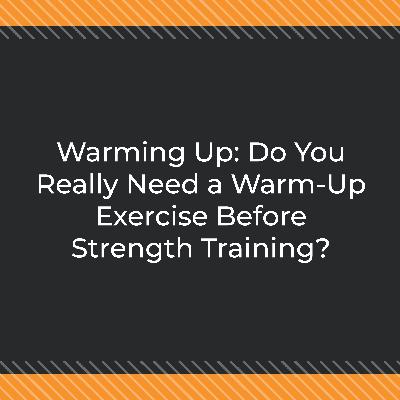

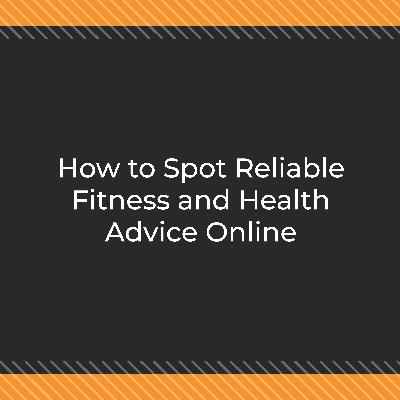
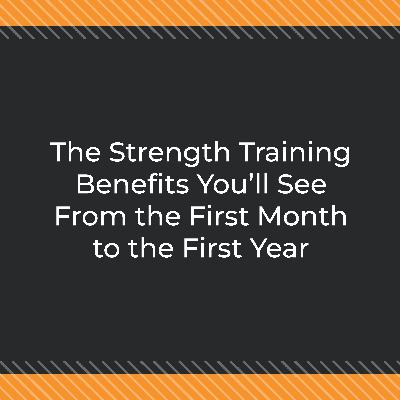

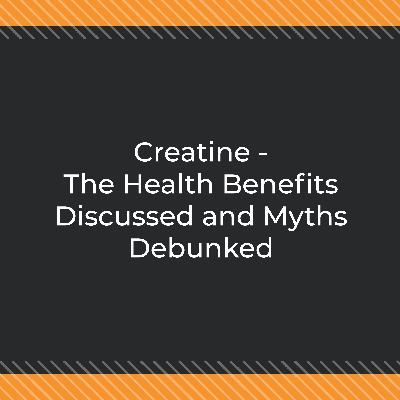
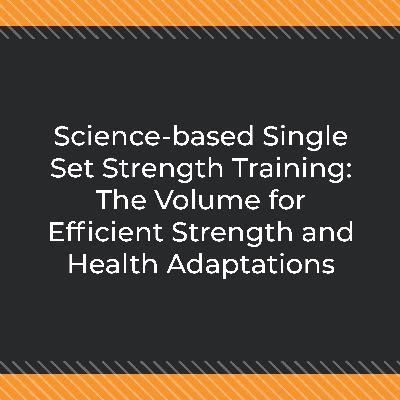
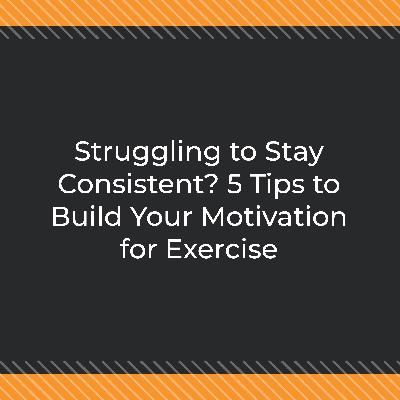
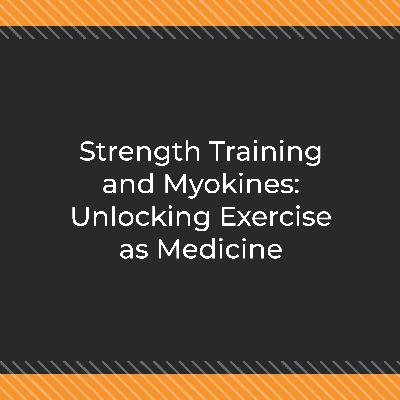
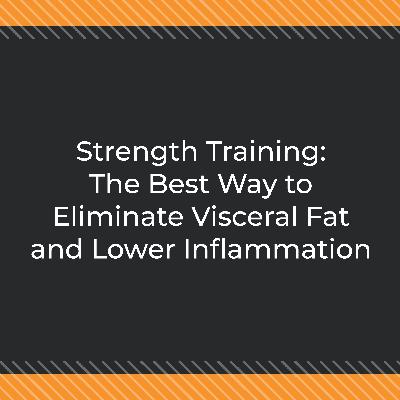

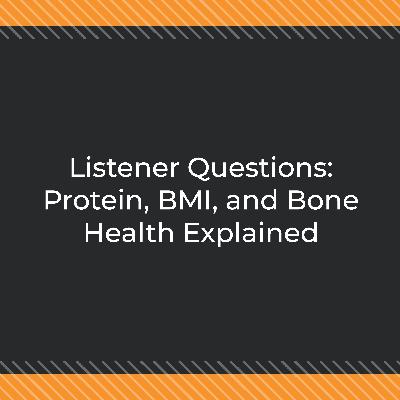
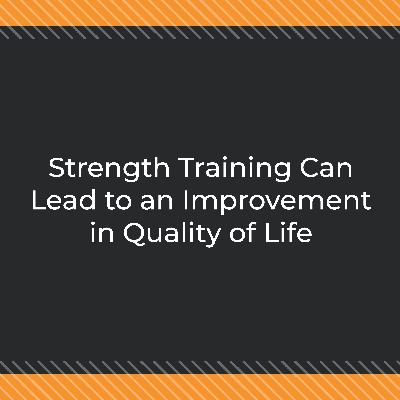
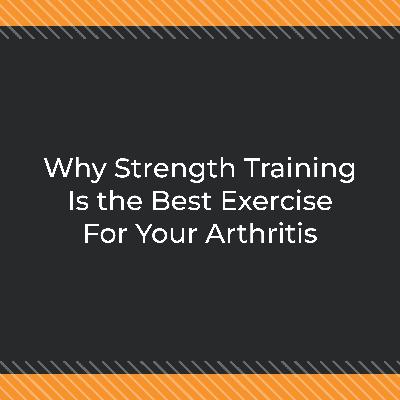


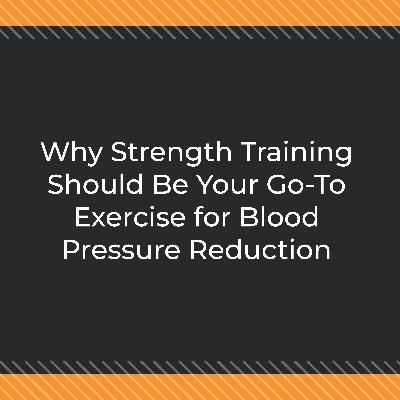
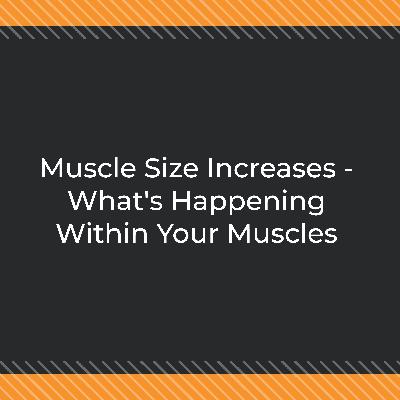



I think this is already info for a more advanced level, but it definitely won’t hurt. But if you just start with a simple workout plan, which you can now make in apps like madmuscles, that’ll already be enough. There’s a subscription, but you can easily cancel if needed with the guide https://support.madmuscles.com/hc/en-gb/articles/7075931986706-How-can-I-cancel-the-subscription . When you’re starting, it’s important to distribute the load properly and also think about nutrition so you have enough energy.
Do you really need to know all these details when you’re just starting to work out? I mean, how much do you actually need all this knowledge if I just want to get in shape, lose a little weight and stuff like that.